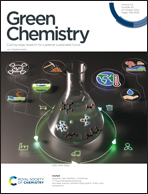Cellulose dissolution and gelation in NaOH(aq) under controlled CO2 atmosphere: supramolecular structure and flow properties†
Abstract
We investigate the interplay between cellulose crystallization and aggregation with interfibrillar interactions, shear forces, and the local changes in the medium's acidity. The latter is affected by the CO2 chemisorbed from the surrounding atmosphere, which, combined with shear forces, explain cellulose gelation. Herein, rheology, nuclear magnetic resonance (NMR), small and wide-angle X-ray scattering (SAXS/WAXS), and focused ion beam scanning electron microscopy (FIB-SEM) are combined to unveil the fundamental factors that limit cellulose gelation and maximize its dissolution in NaOH(aq). The obtained solutions are then proposed for developing green and environmentally friendly cellulose-based materials.



 Please wait while we load your content...
Please wait while we load your content...